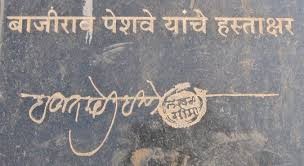The Great Maratha Warrior – Bajirao
India is home to some valiant warriors who have set new premise for the rest of the world to follow in every era. These warriors were exemplary in their war strategies; they were brilliant, visionaries and very good humans. It requires more than absolute brilliance to be remembered for centuries. One of such brave warriors was Bajiaro Peshwa.
Bajirao was too sharp and was known for his speedy attacks; he used to never give time to his enemies to think strategies. Bajirao established his presence from Delhi to Srirangapatnam and Gujarat to Berar over a twenty year period of his career in the 18th century. He had an inherent ability to gauge the opponent’s strengths and weaknesses and spring the trap when his enemy was not ready or was lulled. This was a typical characteristic of Bajirao. The most astonishing fact is that he won in every battle that he fought. Bajirao achieved it because he had the brilliance and he was too good in implementation.
Bajirao Balaji Ballal was the son of Balaji Vishwanath Ballal who had shored up Chhatrapati Shahu’s fortunes. A grateful Shahu looked no further than Bajirao to be his next Prime Minister – Bajirao was just twenty years of age. The other claimants were much older. After Bajirao took the reins of Peshwa, the older warriors refused to co-operate, hence the traditional Maratha aristocracy appointed Malhar Rao Holkar, Ranoji Scindia and Udaji Pawar as his primary helpers. From here began the move towards an empire.
The Peshwas were hereditary prime ministers of the Maratha Empire who had power commensurate with that of the rulers. Though Bajirao himself made administrative decisions and led the Maratha army in battle well beyond the Narmada, he was still subordinate to Shahu Maharaj, the grandson of Shivaji and ruler of the Maratha Empire.
In the first few years, Bajirao helped the Nizam ul mulk to establish his rule at Aurangabad and was honoured by the Nizam for his role at the battle of Sakharkhedla in 1724. He then went on two campaigns to the south; to Chitradurg in 1725 and Srirangapatnam in 1726. An urgent summons from his king to ward off the threat posed by the Nizam brought him back to Satara. The Nizam, had taken assistance from Sambhaji of Kolhapur had threatened Shahu’s very existence.
Bajirao was also surrounded during the same time by Nizam without his artillery at Palkhed which forced him into surrender. But, the witty and shrewd Bajirao tricked Nizam to accept all conditions. Bajirao’s battle plan at Palkhed has been described as a ‘masterpiece of strategic mobility.’ Bajirao’s brother Chimaji Appa, defeated and killed the Mughal subahdar at Amjhera and stamped Maratha authority in Malwa. This province was the link between Hindustan and the Deccan and therefore was of pivotal importance. Around the same time, Muhammad Bangash attacked Bundelkhand and threatened its aged ruler Chhatrasal. It is mentioned in the historic documents that Chhatrasal’s daughter Mastani met Bajirao and asked his help to fight Bangash.
Bajirao moved quickly through a isolated path to surprise Bangash and rescue Chhatrasal. After a siege at Jaitpur, Bangash sought terms. Chhatrasal, ever grateful, gave Bajirao a third of his kingdom. He also gave him his daughter Mastani whose mother was an Iranian woman named Ruhaani Bai.
And, that’s when a love affair engaged Bajiaro’s life. The great warrior had to face bitterness from his mother, his brother, his wife and other chiefs in the Maratha fold. The great Marathi author N.S.Inamdar in his book ‘Rau’ has painted Bajirao’s enormous life but also depicted him as a flawed figure despite his great achievements. Bajirao was ahead of the time, he wanted to give Mastani status of wife, he wanted people to respect her the way he did. But others dint want Mastani in Bajirao’s life because he was married to Kashibai. After reading the book ‘’Rau’’ one feels that people enjoyed all the good that came from Bajirao’s actions but none gave him the freedom to lead his life as per his wishes. And this is the biggest tragedy in this great Maratha warrior’s life. Bajirao evidently fought great social sanctions and political peril to stay with Mastani, and protected her from political reprisal until his death.
In the 18th century, India was culturally and ethically so strong that even Kings could not escape the social dogmas. On one hand people were so happy with Bajirao Peshwa for being the only Maratha ruler to extend the Maratha Empire to almost entire India including Delhi and on the other hand same people hated him for having an affair with Mastani. In the end the King who gives shelter to all the poor and needy people died without a shelter. One big lesson to learn from Bajirao’s story is that people expect their rulers to follow the social doctrines, to be ethical and practice what they preach.
Bajirao died on 28 April 1740, at the age of 40. He died of a sudden fever. It seems he was on job of inspecting his jagirs. At that time, he was en route to Delhi with 100,000 troops under his command at his camp in the district of Khargon, near the city of Indore. He was cremated at Raverkhedi near the river Narmada. The Scindias built a chhatri (dome) as a memorial at this place.
It’s sad that such a great warrior’s life is lesser remembered for his heroic deeds; he is more remembered for his love for Mastani.















































